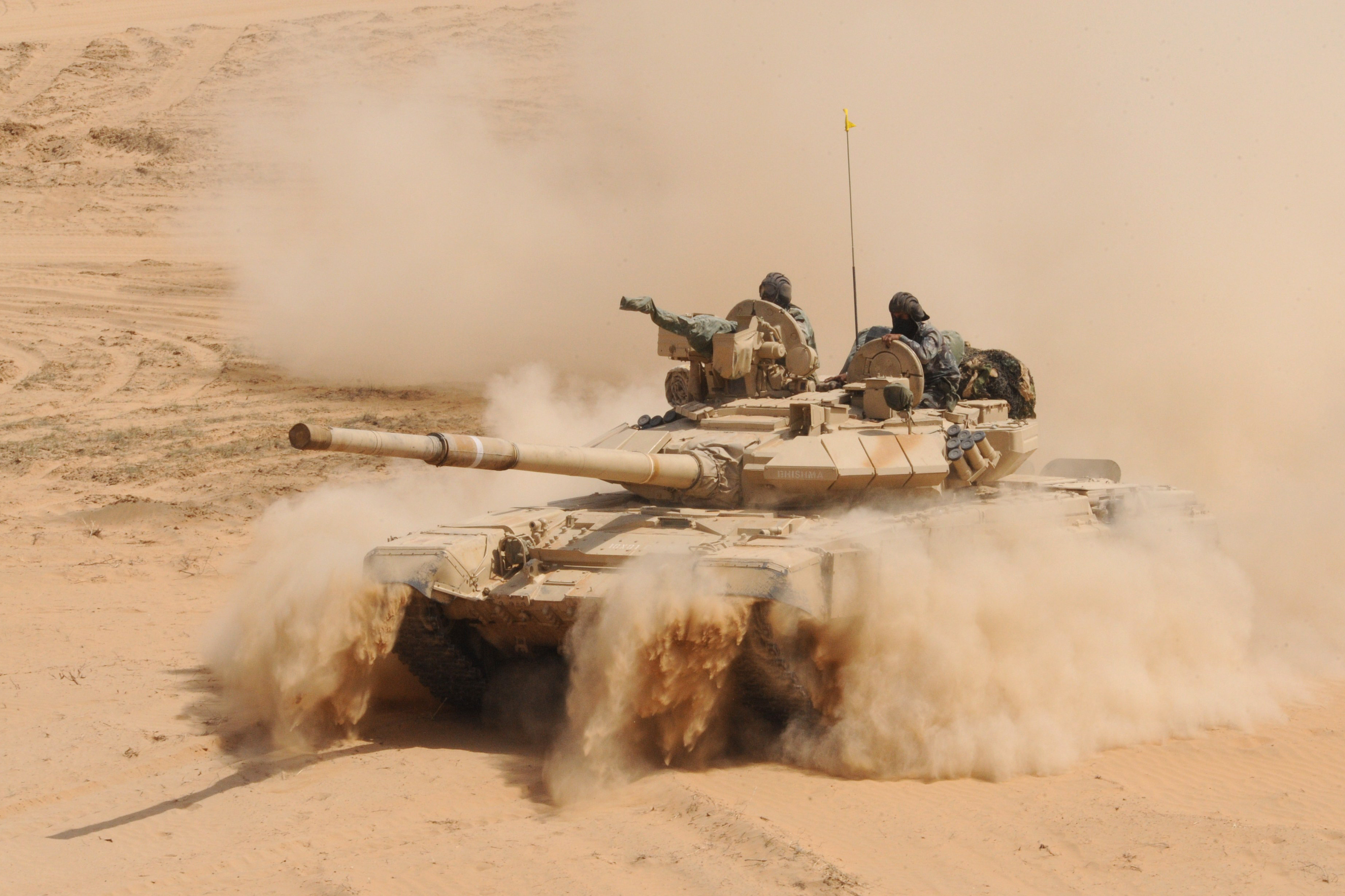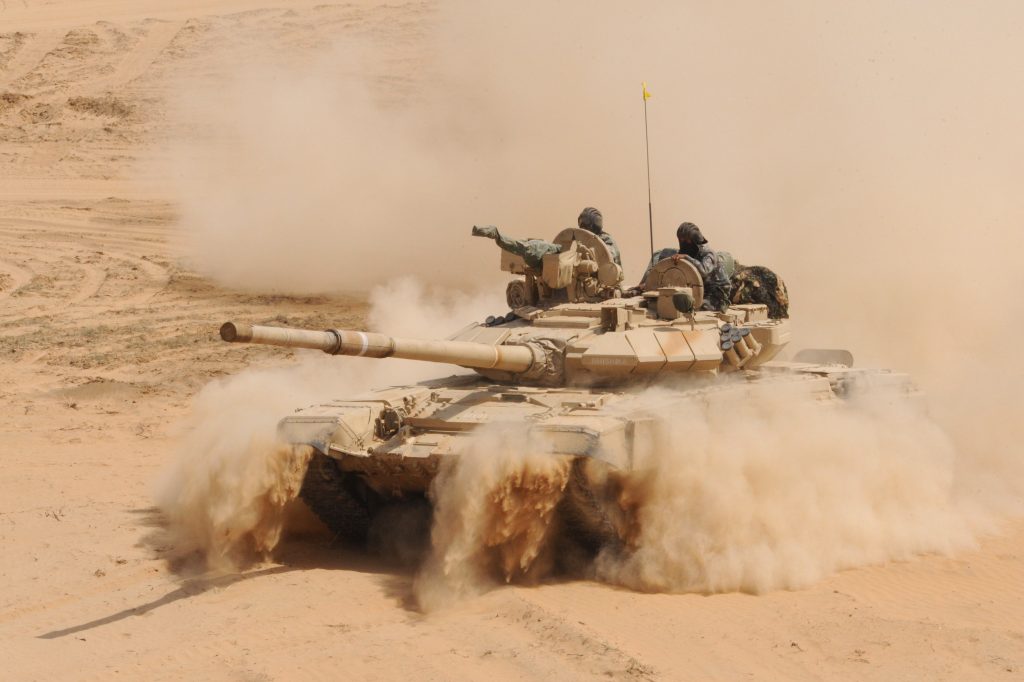Sourced : Russia & India Report
By Rakesh Krishnan Simha
The Indian Army’s move to beef up its tank force on its western border – coming days after army chief Bipin Rawat’s acknowledgement that the Cold Start doctrine exists for conventional military operations – indicates India has begun to build a powerful force to fight a “short and intense” war against Pakistan.
Cold Start is the colloquial term for the Indian Army’s Proactive Military Strategy for a blitzkrieg style strike into Pakistan. It was developed after the army brass realised wars in the subcontinent were too short – two to three weeks – for India to deploy its large Strike Corps stationed deep in central and peninsular India, far from the action to be of any practical use. Also, Indian politicians often got cold feet just as the army was about to deliver the death blow to the enemy.
Although its operational details remain classified, the goal of Cold Start is broadly for Indian armour and infantry to launch lightning strikes into Pakistan and capture bite-sized (up to 80 km deep) chunks of enemy territory within 72 to 96 hours from the time the order to mobilise is issued.
In order to enable quick mobilisation, India is building up – albeit gradually – heavily armed division-sized Integrated Battle Groups consisting of artillery, armour and aviation elements capable of limited offensive operations.
Russian spearheads
Russian main battle tanks would be at the core of the Battle Groups, as they are the key offensive weapons required to launch rapid thrusts into Pakistani territory. India already has a sizeable tank force on the border, and it will be bolstered by over 460 new T-90SM tanks.
According to IHS Jane’s Defense Weekly, the newly ordered tanks will supplement 850-900 license-built T-90S Bhishma tanks, divided into 18 regiments, and currently deployed in Rajasthan and Punjab.
However, before the tanks crash into Pakistani armour, the Indian Army would have to soften up Pakistani defences. This will be achieved through a massive artillery barrage by multiple launch rocket systems – the made in India Pinaka or the Russian Smerch, known as the deadliest artillery rocket system in the world.
Military Today describes the Smerch system as a “weapon of mass destruction” that can fire twelve 300 mm rockets in a space of 38 seconds. “A full salvo of a single launcher covers an area of up to 67 hectares,” says the magazine. The Smerch would be able to pulverise concentration of Pakistani armoured vehicles, artillery batteries, airfields and other area targets. Using anti-personnel submunitions it can destroy large numbers of enemy troops, clearing a path for the advancing Indian Army.
The BrahMos cruise missile will play a key role in the initial stages of the conflict. The Indo-Russian missile, which accelerates to supersonic speed in its terminal phase, will take out Pakistan’s critical 3C – command, control and communications – infrastructure. As India has real-time intelligence gathering abilities via its constellation of spy satellites, the BrahMos can be used against moving or stationary armour concentrations and other key battlefield targets.
Another element of Cold Start is the attack helicopter, which will escort armoured columns into battle. India has two squadrons of the Russian-origin Mi-25/35 attack helicopter which will be used to suppress enemy armour as well.
Although Cold Start is army-specific, there is no way it can fight a major war without air force support. Indian Sukhoi Su-30MKI and MiG-29 jet fighters will be deployed in the air to achieve air superiority, thereby preventing Pakistani fighter aircraft to come near the war zone. Devoid of air support, the frontal elements of Pakistan Army will be hammered in the initial hours of battle.
The above are just the primary weapons required for a rapid advance. Other equipment will include bridge laying tanks and minesweepers both of which will play significant roles as Pakistan has created an extensive network of canals, ditches and tanks traps to stop a possible Indian armoured thrust.
Pakistan’s options
Pakistan can never hope to blunt an Indian attack through conventional weapons. Its military and political leadership keeps up the refrain that Pakistan has a low nuclear threshold and if it looks like the Indian Army is about to break up the country, Islamabad will stop the Indian juggernaut by launching battlefield nukes and nuclear cruise missiles.
However, by declaring it will use nuclear weapons on its own soil, the Pakistan Army has revealed its defeatist mindset. It also shows that the generals in Rawalpindi are prepared to hold their country hostage. The saying that “Pakistan is the only country in the world that negotiates with a gun to its head” is never more correct as in this case.
As opposed to Pakistan, India has a declared no first-use of nuclear weapons. However, its nuclear strategy is clear on one thing – even a single nuclear strike on an advancing Indian Army column would invite a devastating and disproportionate counter attack that will decapitate Pakistan. India will suffer too, but being seven times larger, it will probably dust itself and walk away.
Pakistan, therefore, will have to think long and hard before it thinks of releasing its Babur or Nasr pocket rockets.
Is India prepared?
In recent years, the Indian Army has refined its strategy through a series of theatre-level exercises, but Cold Start is still a work in progress.
According to a report by Vipin Narag and Walter C. Ladwig (a long time Cold Start watcher), there is no evidence that India has the capability to adopt or execute such a doctrine.
“The army simply lacks the material and organisation to implement the more aggressive versions of Cold Start,” they argue. “It is not at all clear, for example, that the Indian Army at present possesses sufficient superiority in numbers of troops and armoured vehicles in the vicinity of the international border to be able to overcome the Pakistan Army’s defensive and geographic advantages in a short conflict. Indeed, the large number of obsolete tanks and artillery pieces, not to mention critical shortages of ammunition and air-defence assets raises serious questions about the army’s ability to implement a Cold Start-style operation at all.”
In 2012 former army chief V.K. Singh had caused a commotion when he said the army had ammunition reserves for just four days of fighting and that the majority of India’s weapons were obsolete. His allegations were clearly directed at then defence minister A.K. Antony for stalling numerous Indian defence acquisition projects.
The Narendra Modi government has launched a massive programme of modernisation, procurement and production in order to provide the defence forces with the weapons they need to win wars. Cold Start involves a high degree of preparation and the ability to achieve surprise. That will come only with the right training, leadership – and equipment.


